The inspiration for the post dedicated to VAT rates in gastronomy is the recurring topic of unifying the VAT rate for food and beverage products and services. Discussions on this topic began in 2020 at the initiative of the Polish Chamber of Gastronomy in the form of a project to introduce a uniform rate of 8%. In the current version of the project, the proposal concerns unifying the rate to 5% for all gastronomy products and services.
Despite subsequent attempts and actions by the Polish Chamber of Gastronomy, the matter has reached a stalemate, and the applicable rates remain as they were. Nevertheless, the proper classification of VAT rates for food and beverage products and services in the broad field of gastronomy still remains unclear.
"While the division of taxable and VAT-exempt activities may seem clear to many entrepreneurs because they should constitute the supply of goods or the provision of services, in the case of the broadly understood gastronomy, the inclusion in goods or services does not mean the end of the process of determining the appropriate VAT rate," says Marek Przybylski, tax advisor, legal advisor, and manager at MDDP.
In gastronomy, a preferential rate of 8% VAT "applies to the supply of goods and provision of services classified according to the Polish Classification of Goods and Services in the grouping of food service activities (PKWiU 56)." According to PKWiU 56, food service activities are "services related to providing full meals intended for direct consumption in restaurants, including self-service and takeaway restaurants, with or without seating. The type of establishment serving meals is not essential here, but rather the fact that they are intended for direct consumption."
VAT rates are linked to the classification of PKWiU 56 (Food service activities), and their allocation can be summarized in one of four possible situations:
Yes. The first exception applies to beverages that, despite being classified under PKWiU 56 "Food service activities," exclude the possibility of applying the 8% VAT rate. The second exception concerns goods not processed by the purchaser, unless they qualify for a reduced VAT rate (Attachment No. 3 and 10 to the VAT Act, regulations lowering VAT rates). Otherwise, in both cases, the standard rate of 23% VAT should be applied within the scope of gastronomic services.
An exception to applying the 23% VAT rate is the sale of juice freshly squeezed from fruits. Referring to WIS (Director of the National Fiscal Information) from January 26, 2021, we read that "the service of preparing and serving juice to a customer seated at a table in a gastronomic establishment [...] is classified under the PKWiU 56 section - Food service activities, and the said juice is a drink listed in Annex No. 10 to the VAT Act, therefore subject to taxation at a rate of 8% based on Article 41(12f) of the VAT Act."
The third exception from applying the preferential 8% VAT rate is the sale of meals containing ingredients listed in items 2 and 11 of Annex No. 10 to the VAT Act, which are:
In practice, this means that when serving a dish in a restaurant that contains any of the mentioned ingredients (fish and seafood), regardless of their percentage in that dish, the dish is subject to taxation at a rate of 23% VAT within the scope of gastronomic services.
In case of difficulties in determining the appropriate VAT rate for a product or service, it is worth checking whether the mentioned product or service has already been the subject of a decision (WIS) issued by the Director of the National Fiscal Information. This information is available in the Customs and Tax Information System EUREKA.
If a given product or service is identical to the one indicated in the WIS, the VAT rate specified in that decision can be applied. If not, a new application can be submitted to the Director of the National Fiscal Information. The received decision will indicate the appropriate symbol for the sold product/service and the correct VAT rate.
It should be emphasized that every entrepreneur should monitor any changes in the applicable regulations and comply with them accordingly.
